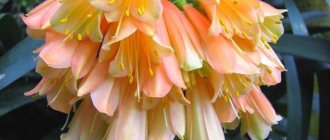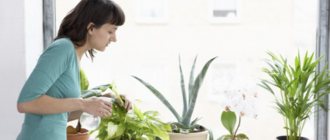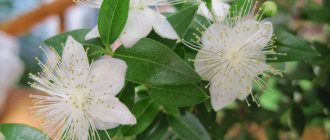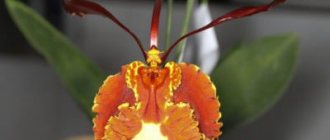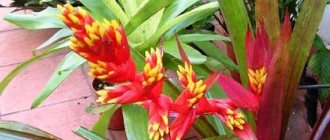The Haworthia genus includes more than 80 species of leafy, dwarf succulents native to the arid regions of central and western Africa.
The genus owes its name to the 18th century English botanist Adrian Haworth, who was the first to classify these amazing plants.
The huge diversity of species, the bizarre shape of the foliage of some specimens and ease of care have made Haworthia one of the most popular succulents for indoor growing.
Depending on the species, the height of the slow-growing plant is approximately 8-20 cm. The fleshy and hard leaves of many members of the genus are very similar to those of agave or aloe.
Collected in dense, low rosettes, they serve as a reservoir of life-giving moisture, which the plant needs during periods of prolonged drought.
Leaf structure and color can vary greatly even within the same species. Their color varies from light green to dark green, olive or bronze. They can be either smooth or jagged along the edge, many are covered with tubercles-growths.
Haworthia mix
Some species are striking with their translucent structure - these are the so-called fenestrate leaves, on which there are areas in the form of “windows” that transmit sunlight into the internal body of the plant, rich in chlorophyll-containing cells.
Leaf windows greatly increase the photosynthesis area by allowing light to enter the center of the succulent while avoiding water loss.
In the spring-summer period, small white or cream, tubular flowers appear at the top of a thin and rather long peduncle.
Haworthia flowering
However, at home, haworthia blooms only if all growing rules are observed - in an environment close to natural.
The main advantages of Haworthia
If necessary, Haworthia can go without water for up to several weeks, without forcing you to rack your brains about who to entrust watering to during the holidays.
Thanks to this, it is an excellent idea for a gift that does not burden the recipient, because it is suitable for both home and office, and is able to endure long separations from a person without compromising its well-being.
In addition to being a very convenient houseplant, Haworthia boasts a huge number of different varieties. To all the other positive qualities of Haworthia, another bonus is that it is not poisonous to people or animals.
How to plant a flower
Haworthia grows in width, and this quality is most often used in its propagation. The old bush remains in the center, and the young ones grow next to it. They can be carefully separated from the mother bush during the next transplant.
The root system is trimmed with a sharp knife and the new shoot is transplanted separately.
It is recommended, however, not to immediately move a sprout with a damaged root into the ground, but to keep it for up to 7 days, without planting it anywhere, to heal the wounds, and only then replant it in a permanent place.
Growing conditions
Haworthia will perfectly withstand a long independent existence if it is in an acceptable room temperature (from + 10 to + 29 degrees Celsius), not in direct sunlight, in a room where there is ventilation, and it is watered regularly (at least once every two weeks).
These plants easily adapt to moving and tolerate various lighting conditions well, but not direct sunlight or deep shade. In direct sunlight, the haworthia leaves gradually turn unsightly red, purple or brown, and then the flower dies.
If you move it to a more shaded place in a timely manner, and the process of changing the color of the leaves has not gone too far, Haworthia will be able to return to its original appearance.
Deep shadow gradually and imperceptibly weakens the plant. Haworthia becomes pale green, loses its original “pearl” seals and markings and its compact shape, and begins to stretch out, as if trying to find the sun's rays somewhere above.
At the first suspicion of a negative effect of shade, you should add light to the plant - but just do not leave it in direct sunlight.
Varieties of succulent with transparent leaves
Truncata
Haworthia cooperi var. truncata. Rosette up to 7 cm in diameter with 10-25 leaf blades. The leaves are truncated, smooth, transparent on top, with small bristles along the edges. The veins are dark green, there is no hair at the end of the leaf.
Variegata
Haworthia cooperi var. variegata. It grows in dense clumps of several rosettes, each up to 5 cm in diameter. The leaf blades are light green with longitudinal stripes of white-green color. There is a main hair at the end of the leaf and short hairs on the lateral ribs.
Completely white rosettes devoid of chlorophyll appear periodically.
Dilsiana
Haworthia cooperi var. dielsiana. It grows in rounded rosettes 5-10 cm in diameter. The tips of the leaves are strongly rounded, there is no awn, and there are bristles along the edges. The color of the leaves is bright yellowish-green. It reproduces by seeds, as it does not produce children.
Pilifera
Haworthia cooperi var. pilifera. Rosettes with a diameter of 4 to 12 cm. The leaves are fleshy bluish-green, with a translucent pointed tip ending in a short hair.
The ribs are acute-angled, with very short hairs.
Venusta
Haworthia cooperi var. venusta. The rosettes are small, compact, up to 6 cm in diameter. In culture they can grow stronger. The small, pointed leaves are silver-green in color and covered with white bristles.
Watering – easy and infrequent
Not the most difficult question is how to water a Khavrotia flower, because it quite patiently waits for the next portion of moisture.
In order for it to simply survive, it is enough to water the plant once a month, but if the goal is its prosperous existence, it requires watering at least once every two weeks, and possibly once a week - if the ambient temperature is constant above 25 degrees Celsius.
Haworthia, which tolerates heat well, quickly dies if overwatered. When watering it, you should make sure that the water does not flood the crown or inflorescence - at low temperatures, excess moisture can contribute to irreversible rotting of these parts of the flower.
Humidity and fertilizing
As a rule, succulents do not particularly care about the level of humidity in the room, but they do like good ventilation, so you should avoid overly cramped and “airless” corners of your home or office for placing Haworthia.
You should not feed your haworthia with fertilizers too often; in addition, you must always make sure that the prepared solution is not too saturated.
Temperature
Haworthia is quite suitable at normal temperatures, even in an unheated room, which lasts from spring to autumn. In winter, even if additional heating is turned on, it will withstand it as much as a person can withstand it.
If we are not talking about a Russian stove or Haworthia is not standing on a radiator, any temperature regime will be comfortable for this plant.
Transplantation and vegetative propagation
Haworthia does not quickly “grow” out of its pot, so it will not need replanting very often. Young plants are replanted approximately once a year, and grown ones - no more than once every three years.
If the time has come to replant it, it is necessary to use a soil composition similar to that in which Haworthia was previously located. Typically, neutral soil is used for these purposes with the addition of sand or perlite to improve the drainage process.
If you divide the plant after transplanting using cuttings, you can reuse the existing pot. When replanting completely, simply select a pot slightly larger than the previous one.
For cuttings, a sharp knife is used; the cuttings of the new Chavrotia are cut close to the main (mother) plant. You should also make sure that the plant being separated has roots.
Sometimes a knife is not necessary, as the detached plant resembles a loose tooth and comes off naturally with a slight tug. The jerk should be done carefully, trying not to damage the main plant.
You need to wait a day until the cuttings dry out a little - this will reduce the likelihood of the untreated “wound” rotting when added to compost.
It is then placed in a small pot using standard succulent soil, watered and placed in a fairly warm place. Transplantation and cuttings are preferably carried out in late spring.
All healthy plants will eventually produce flowers; any Haworthia usually blooms in summer or late summer. The absence of flowers in an adult (3+ years) plant may signal the need to reconsider the method of caring for it.
What the haworthia flower brings to the house: signs and superstitions
It is believed that this is a protective plant. It absorbs bad energy, and in return gives out good and bright energy. In Africa, where this plant grows naturally, it was even planted on the roofs of houses so that it would scare away lightning during thunderstorms (thunderstorms in Africa are stormy and scary), as well as ill-wishers and evil spirits.
It is ironic that this succulent, of course, was not intended for growing on roofs; they did not consider it necessary to care for it, so the plants often died. In this case, they were simply replaced with new ones, believing that the plants died from the intervention of evil spirits or having absorbed the negative energy of a thunderstorm.
Reviews from people who believe in esotericism indicate that the following signs are associated with haworthia:
- It is believed that if a plant has withered, it means that there is too much negative energy in the house that it cannot cope with. But if the flower looks healthy, it means that everything is fine.
- The shoots stretched upward are called antennas, because they sensitively catch everything bad, and everything good seems to “cling” to them - love, success, luck, joy.
- It is believed that this indoor plant calms even the most violent temperament, reduces the number of family quarrels, and gives confidence and calmness.
- Attracts success in the material sphere.
- It calms the mind and stimulates memory, so it is useful to keep it on your desk if you are a student or engaged in intellectual work.
By the way, this is not only a sign: haworthia is a bright green plant, plus it actually absorbs harmful substances and generates oxygen, that is, it will be a little easier for you to breathe, a little less harmful elements will enter your body, and the beneficial properties of green color for the psyche you probably know.
- Blooming haworthia is not a very attractive sight; this indoor flower is grown mainly for its unusual leaves. But, unlike other, more capricious flowers, this plant can bloom at any time of the year. The signs associated with it speak exclusively of good and positive things. It is believed that if the haworthia has bloomed, the omen is correct: success, joy and prosperity await you, love reigns in your home, and if you are looking for a companion or life partner, then he or she will appear soon.
- It is believed that this flower dreams of something good. For example, if you just saw her, it means that soon you will start some new, interesting business; replanting a haworthia in a dream means the emergence of new opportunities; simply organizing care means making peace with someone with whom you quarreled; watering means traveling with the whole family.
- But if you see a wilted haworthia, that’s worse. It is believed that this symbolizes a deterioration in the relationship with a spouse, or even the betrayal of a loved one. Or another option: a serious mistaken decision.
- If in a dream the haworthia around you multiplies exponentially and surrounds you on all sides, this symbolizes certain experiences that you carefully hide from others.
- According to Feng Shui philosophy, Haworthia attracts wealth. The fact is that this is a succulent flower, and succulents store water in their leaves. Therefore, the ancient Chinese believed that just as the haworthia saves water, so its owner will save money.
It is recommended to place the haworthia in the south-eastern part of the room, preferably where there are often a lot of people (for example, in the living room or kitchen), but even an office would be suitable for the location, especially if you often have visitors. A rectangular, vertically elongated pot of any shade of green is recommended.
Seeds or cuttings?
Vegetative propagation when growing Chavrotia at home is the fastest and most reliable way to get this plant into your home.
However, some indoor gardening fans prefer to grow their plants from scratch and only from seeds. In the case of Chavrotia, their viability begins to steadily decline about a year after harvest.
You should buy only fresh seeds, and decent sellers should indicate the harvest season and the most preferred methods and time for starting to grow seedlings in a particular region.
By purchasing Haworthia, a home gardener will receive a grateful and patient plant that will always “get into position” and wait for its portion of water, light or fertilizing - only for this can you love it with all your heart.
Kinds
The exact number of species in the Haworthia genus is still unknown to scientists, as more and more new plants are being discovered in the wild. Several dozen varieties of succulents are successfully grown in indoor gardening.
Haworthias are very variable, most of them have many varieties, which at one time were considered independent species.
Bibliography:
- Cacti and succulents: Illustrated Encyclopedia / Anderson M. - M.: Niola 21st century, 2002, - 264 pp.: ill.
- Thorn: how to create a green oasis at home. Amazing cacti and succulents / Zhinel Leon. — M.: Eksmo, 2022.— 224 p.: ill.
- Recommendations from collector Haworthia Atelier Sakura (www.haworthia.com)
- Special issue of the newspaper “My Favorite Flowers” No. 11, 2013
- All about succulents / McCallister. R. - St. Petersburg: LLC "SZKEO "Crystal", 2007. - 208 p.: ill.


